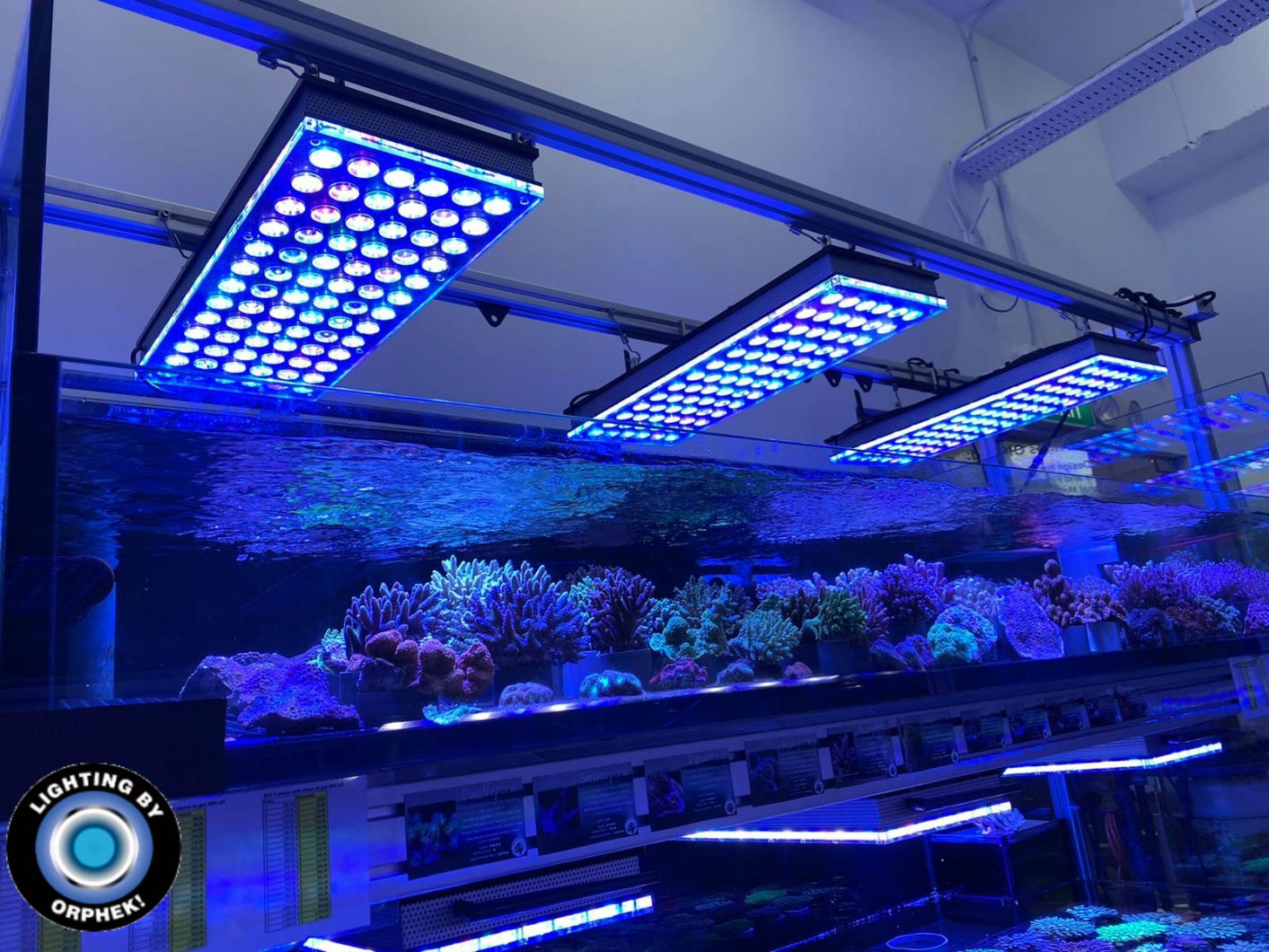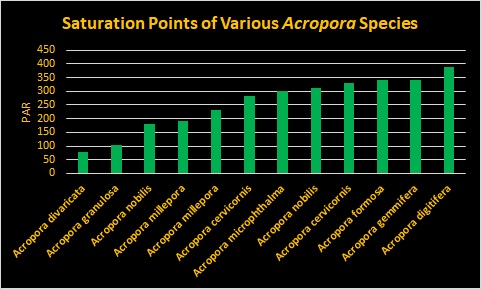
Light Requirements of a Coral Genus Often Found in Reef Aquaria
By Dana Riddle
In previous installments, we have discussed how to measure light intensity, reviewed light requirements of a Hawaiian coral, and discussed terminology. This time, we’ll look at light requirements of a coral genus often found in reef aquaria – Acropora.
Acropora is a pandemic genus and is found in Atlantic and Pacific Oceans. There are XXX species described and can occupy shallow to very deep waters. It is a common belief that small-polyp stony (SPS) corals’ zooxanthellae require high intensity light to survive. Is this true? To answer this question, we’ll revisit issues of photobiology.
As we discussed previously, Symbiodinium species and clades require a minimum amount of light, and this is called the Compensation Point. On the other hand, the Saturation Point is when the rate of photosynthesis does not increase with increasing light intensity. As reef hobbyists, it is our goal to exceed the amount of light required for the Compensation Point (necessary!) but not pass the Saturation Point (Note: This is for photosynthesis – the amount of light required for expression of color in corals often exceeds the Saturation Point. We’ll discuss this in the future.)
Symbiodinium species can alter their Compensation and Saturation Points – this is called Photoadaptation. Photoadaptation allows zooxanthellae to lower their Compensation and Saturation Points as depth increases (and available light decreases) and in shaded areas. As such, a coral found in 40 meters of water sometimes requires less light than a coral found in a shallow tidepool. Photoadaptation is not unlimited, and some types of zooxanthellae can adapt better than others, and the type of zooxanthella plays an important part.
Figure One demonstrates the Saturation Point of various Acropora species.
Figure One. Saturation Points of Acropora species. Generally, the deeper the depth of the coral, the less light it requires. However, this is not the case.
The values shown in Figure One should not be considered as absolutes for many reasons. First, testing techniques (such as respirometry) can not distinguish light requirements of shaded or highly illuminated areas – it reports only an average amount of light required. In addition, some corals (such as Acropora cervicornis) are known to host different Symbiodinium species throughout the year – zooxanthellae with tolerance of higher light (and heat) tolerances can be prevalent during the summer months. If light requirements are determined through PAM fluorometry, the results are germane only to the small area tested.
Whatever the caveats, the results of testing done by various researchers over the course of many years demonstrates that Acropora species do not need a great deal of light. Indeed, the most light used by an Acropora digitifera is about 20% of maximum sunlight at the water’s surface. These light intensities are easily achievable with today’s lighting systems.
Bear in mind that it is acceptable to expose a coral to light intensities higher than shown in Figure One, especially if expression of intense coloration is desired.
read more:
Lighting the Reef Aquarium – Part 1
Lighting the Reef Aquarium Part 2-Measuring Light Intensity
Lighting the Reef Aquarium Part 3- The Myth of Corals Requiring Unlimited Amounts of Light
